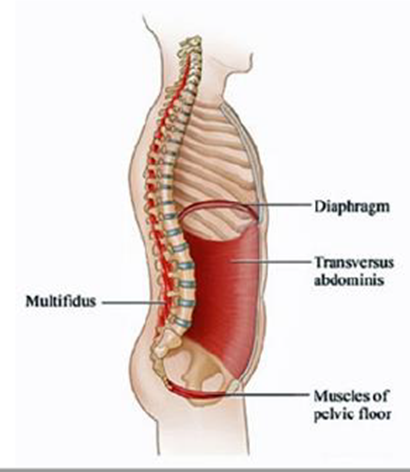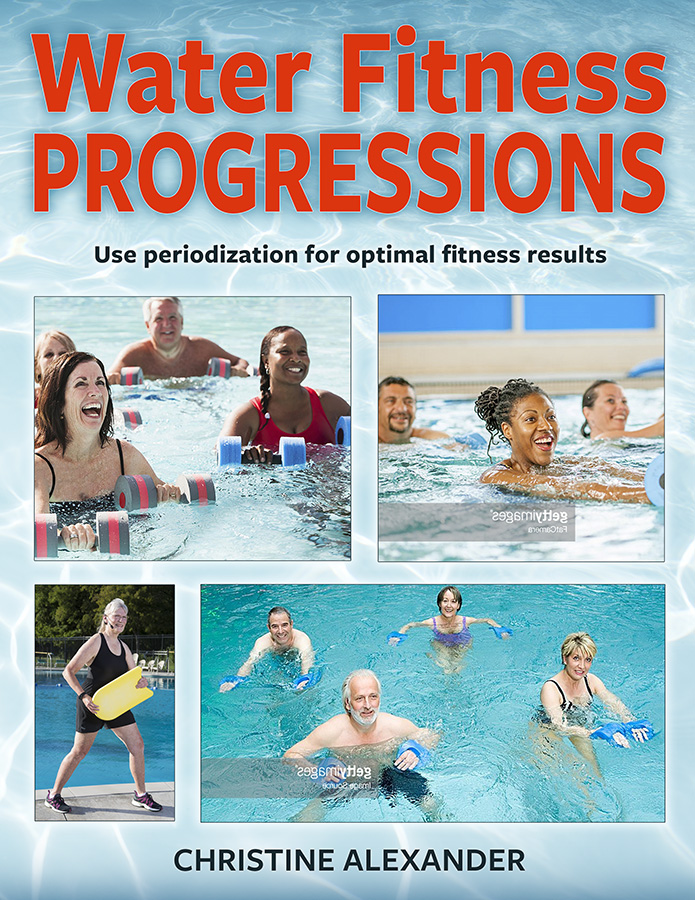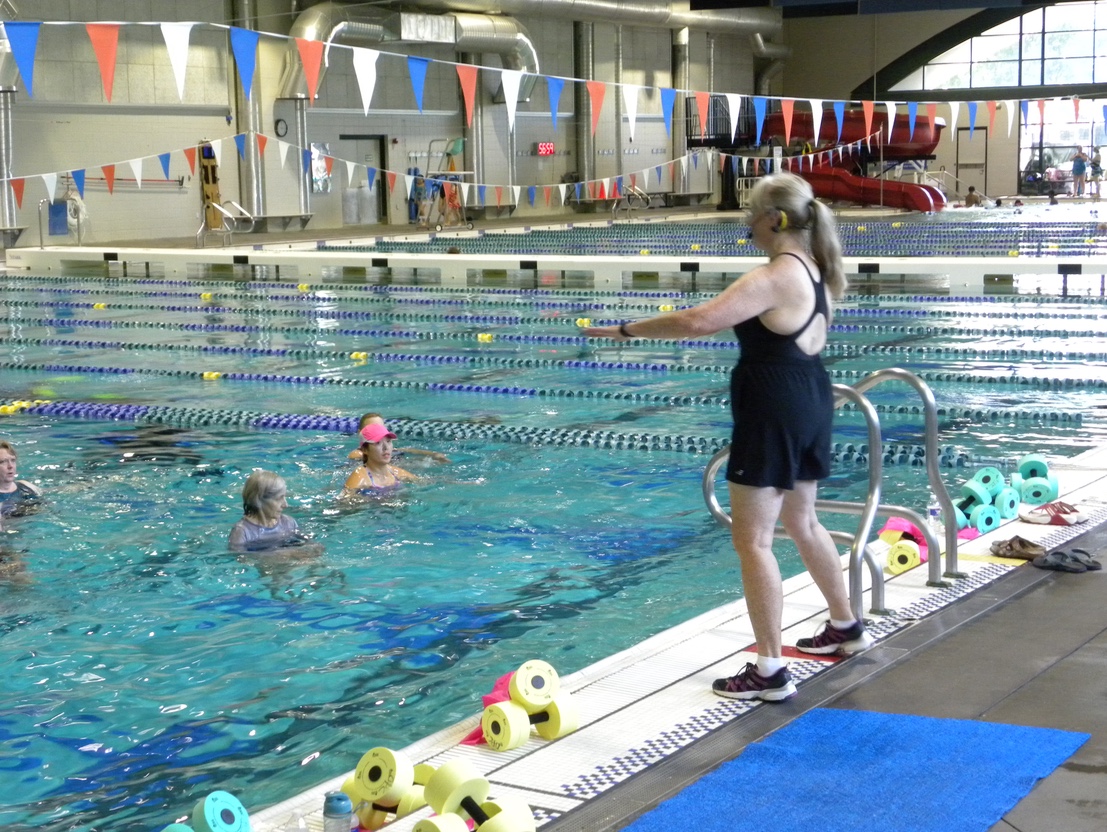The activities of daily living, or ADLs, are self-care tasks. These tasks are:
- Self-feeding
- Bathing and showering
- Dressing
- Functional mobility, or the ability to walk, get in and out of bed, and in and out of a chair
- Toileting
- Continence
It goes without saying that we all want to be able to do these tasks as long as possible. It is not true that frailty is an inevitable part of aging. Frailty is the result of inactivity. Exercise is the magic pill that will keep us enjoying the activities of life that are important to us. Certain types of exercise can target ADLs. Your exercise program should include these exercises, especially after age 62 when age related slowing typically begins. But it is never too late to begin! The ADLs have been broken down into the following movement patterns:
- Push
- Pull
- Rotate
- Bend at the hips
- Squats
- Lunges
- Brace (hold still) and balance
- Pelvic floor exercises

Push. We push a grocery cart or a stroller. We push the door shut. We push away from the table when we are finished eating. We push when we use our arms to get up from any position. We push our arms into the sleeves when we get dressed. Exercises that involve pushing include the chest press machine in the gym, dribbling a basketball, and push ups. If the traditional push ups on the floor are too difficult, place your hands on a sturdy bench or couch to perform incline push ups, or try standing push ups against a wall or counter top. In a water fitness class any action where the arm moves against the water in any direction away from the body is a push. A chest press toward the pool floor can be performed in a lunge position using buoyant dumbbells. An incline push up can be performed using a noodle.
Pull. We pull weeds. We pull a wagon. We pull the car door shut. We pull when we pick something off the floor. We pull laundry out of the washing machine. We pull clothes out of the closet. Exercises that involve pulling include the rowing machine in the gym, biceps curls with weights, and pulling resistance bands. Wrap the band around a banister or sit on the floor with the band around the bottom of your shoes and pull the ends. In a water fitness class any action where the arm moves the water towards the body is a pull. Jogging arms with cupped hands and jumping jacks with the arms moving toward the midline are examples. You can row with drag equipment, such as paddles or Aqualogix bells.

Rotate. Any throwing or hitting action requires torso and arm rotation. Walking and running involve torso rotation. We rotate to look behind us when we are backing the car out of the parking space, and we rotate to get out of the car. An exercise that involves rotation is to sit in a chair with both hands on one hip and then turn to look over your shoulder. Limit the range of motion if you have osteoporosis. A stretching routine called Controlled Articular Rotations (CARs) uses rotation to improve mobility. To find out more, see Dr. Larissa Armstrong-Kager’s YouTube videos. In a water fitness class you can increase the intensity of a cross-country ski or a high kick by rotating the upper body with the arm swing. Crossing the midline of the body with the arms and crossover kicks involve rotation.

Bend at the Hips. We bend at the hips when we pick something small up off the floor. We bend when we tie our shoes. We bend when we put our pet’s food on the floor. We bend when we towel off after a shower. An exercise that involves bending is a deadlift. With weights in your hands and arms down, bend forward from your hips keeping your back straight and bending your knees slightly; then return to an upright position. We also bend at the hips when doing a hamstring stretch. In a water fitness class we bend at the hips during the up action of a straight leg front kick and during the down action of a straight leg back kick. We also bend from the hips when performing suspended exercises in shallow water, and when performing exercises in the “L” position in deep water.

Squat. We squat every time we sit down in a chair, or on the toilet. The best way to lift something heavy off the floor is to squat and grab the item with both hands and then stand up using the legs. Squats are functional exercises. Stand with your chest lifted and shift your weight to your heels as you lower your hips, as if sitting in a chair. Try not to let your knees go forward past your toes. Then push through your heels to return to standing. Another version of squatting is to sit down in a chair and stand back up again. In water fitness squats do not work the same muscles because the water’s buoyancy makes it easy to return to standing. Standing on an aquatic step so that more of your body is above the water makes the squat more effective. You can work the same muscles with rebounding moves that involving jumping with both feet, such as a tuck jump, a jumping jack and a cross-country ski.

Lunge. You lunge when you step in any direction, or transfer weight from one leg to the other. Walking and running involves lunging. You lunge when you vacuum the floor. To perform a lunge exercise, take a big step forward with your hands on your hips, and slowly lower your body. Make sure that your front knee does not extend past your toes. If your knees bother you on the lunge, you can lean forward slightly from the waist to reduce the stress on the joints. Press through your heel to bring your front foot back to the starting position. If the lunge is too difficult, take a smaller step forward, or don’t bend your knees as far. You can place one hand on a wall or chair to help you balance. In a water fitness class you work the same muscles by jogging, kicking side to side and doing a rocking horse.
Brace (hold still) and Balance. Bracing involves contracting the core muscles to maintain a position. It is important in maintaining balance. The ability to balance greatly reduces the risk of falling. For exercises to improve balance, see my previous Blog post Balance Training at Home. Many of these same exercises can be performed in the pool as well. Another pool balance exercise is the Yoga plank while holding a noodle in the hands under the shoulders.

Pelvic floor exercises. Incontinence is often a problem as we age and the solution is pelvic floor exercise. These used to be called Kegels, but research has changed the way the exercises are done. Keep your shoulders relaxed and breathe normally as you smoothly raise your pelvic floor. Hold for 10 seconds then relax for 30 seconds before performing the next pelvic floor exercise; repeat up to 10 times. Or do 10 quick pelvic floor exercises in succession. For a more detailed description of pelvic floor exercise, see my Blog post Keep Your Inner Core Strong. Pelvic floor exercises can be done in a water fitness class as well as at home.
There is a Functional Core Strength lesson plan and a Balance lesson plan for shallow water as well as a Functional Core Strength lesson plan and a Balance lesson plan for deep water in my book Water Fitness Progressions. The lesson plans demonstrate options for teaching a class focusing on maintaining the ability to perform ADLs. To order the book, click on the link. Many pools are getting ready to reopen following closures because of COVID-19. I hope to see you in the pool soon!


Chris Alexander

 I like my class participants. Over the years I’ve heard about their families, their pets, their challenges, and which of my playlists they like. They are more than just class participants, they are friends. I want them to get a good, safe, effective workout every time they come to my class. I don’t want to bore them with the same old routines. I want to challenge them to progress in their levels of fitness. I want to help them make their hearts stronger, to give them an opportunity to improve their muscular endurance, to challenge them mentally, and I want them to have fun doing it.
I like my class participants. Over the years I’ve heard about their families, their pets, their challenges, and which of my playlists they like. They are more than just class participants, they are friends. I want them to get a good, safe, effective workout every time they come to my class. I don’t want to bore them with the same old routines. I want to challenge them to progress in their levels of fitness. I want to help them make their hearts stronger, to give them an opportunity to improve their muscular endurance, to challenge them mentally, and I want them to have fun doing it.